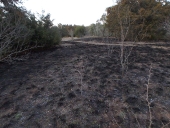posted 5 years ago
Hi Alfredo, welcome to Permies.
So it sounds like you have quite a challenge ahead of you. I want to start out by saying that while I do have a tiny amount of experience with irritation, I am by no means an expert.
I am going to suggest that you try drip irrigation. Drip irrigation works by sending water through a series of tubes that deliver a precise amount of water to a particular spot.
Now I do have to wonder what you are planning on doing with all that land. 38 acres is quite a bit of land for self sufficiency and in a dry climate like yours I personally would have difficulty justifying a center pivot type irrigator. Whenever I see these in operation I am always amazed at how much water is pumped (under great pressure, requiring a lot of energy) into the air and then does not hit ground—much simply evaporated before touching ground again. Center pivot is convenient in that one can easily cover a lot of ground, but it is wasteful in energy and water.
By contrast, drip line irrigation requires much less energy, wastes nothing, but is bit more time consuming to set up.
Regarding your pumping needs, seems to me that you have two options, both pretty obvious. First though, you will probably need to go get some type of well pump. These are typically designed to be installed at the bottom of a well and be submerged. Once you have the pump, you will need to power it and given your situation, I really only see two options. The first is to set up some type of gasoline or preferably diesel setup for running power. These will work well, are mature technology, will run day and night, during broad daylight or the cloudiest of days. So they will work and will probably be quite reliable, but you will have to keep buying fuel for them.
The second option is to have a solar setup. Given your location, solar might well suit your needs. I have not priced out solar lately, but the last time I did it was painfully expensive. I have heard that solar has come down in price considerably so please don’t just throw the idea out based on my unfortunate experience. Your location suggests that solar will both work better for your location and fuel for gas/diesel pumps will be both more expensive and harder to get than if you were near a less remote location. A final concern that is worth pondering (but still, don’t rule solar out) is how much ground are you going to cover up by putting in solar panels? I would imagine only a few square meters, a drop in the bucket compared to your 38 acres. But you will need to calculate the power load needed for running your pumps. Further, do you plan on living on your land? If so, you need to find out how much electricity you need for your household. This is all perfectly doable, you will simply need to calculate the total power needed for your home and pumping, just make sure that you give yourself a little bit of extra capacity as something always prevents 100% operation (clouds are obvious, not so obvious is dust or bird droppings on the pane—some basic cleaning probably should be done at least daily).
I will conclude by saying that I suggest starting small and work up. Maybe try just 1/4-1/2 acre to start—a large garden but nowhere near your entire plot. Obviously I favor drip line irrigation, but you make the decision yourself.
Please, these are just my thoughts and if you think differently, by all means change whatever I have recommended. And also, please keep us updated on your progress.
Eric
Some places need to be wild





 4
4





 1
1


















 3
3
























